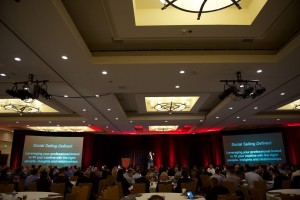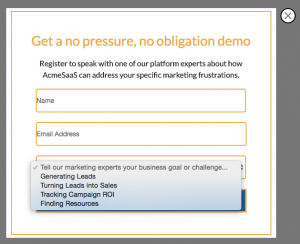
Despite how easy it is to launch a webstore, scaling an online business remains extremely difficult even for the most seasoned ecommerce expert. Ecommerce sales are growing, but many retailers are struggling to capitalize on their digital sales channels. The secret to success is no longer just get it out there and see how it performs. The most successful retailers are strategic and targeted in their efforts, both offline and on.
Effectively targeting a ready-to-buy audience, though, requires solid data and statistics on your customers. For most small and mid-market retailers, bandwidth is low and resources even sparser. Conducting such high-level research to gain a full industry view of who buys what, where and why is costly and heavy on time.
This is why we did it for you. Below, you’ll find ecommerce trends, data and statistics reporting on exactly how Americans shop online, why they convert, why they don’t and who your business should be targeting on the various online channels in order to optimize for ROI.
Dive in, or get more information about the methodology of our study.
Online shopping
- 51% of Americans prefer to shop online
- 96% of Americans have made an online purchase in their life, 80% in the past month alone
Trends by generation
- 67% of Millennials and 56% of Gen Xers prefer to shop on online rather than in-store.
- 41% of Baby Boomers and 28% of Seniors will click to purchase.
- Millennials and Gen Xers spend nearly 50% as much time shopping online each week (six hours) than their older counterparts (four hours).
- 48% of millennials have shopped on marketplaces, 76% at large retailer sites, 46% on webstores or independent boutiques, and 29% at category-specific online stores.
- 56% of Gen Xers have shopped on marketplaces, 76% at large retailer sites, 49% on webstores or independent boutiques, and 37% at category-specific online stores.
- 59% of Baby Boomers have shopped on marketplaces, 74% at large retailer sites, 42% on webstores or independent boutiques, and 39% at category-specific online stores.
- 51% of Seniors have shopped on marketplaces, 66% at large retailer sites, 30% on webstores or independent boutiques, and 44% at category-specific online stores.
- Millennials and Gen Xers spend 6 hours per week shopping online
- Baby Boomers spend 4 per week shopping online.
- Seniors spend 2.5 hours per week shopping online.
Trends by parental status
- Parents spend more of their budget online in comparison to non-parents (40% vs. 34%) and spend 75% more time online shopping each week (7 hours vs. 4 hours for non-parents).
- Parents spend 61% more online than non-parents ($ 1,071 vs. $ 664).
- Nearly half (49%) of parents stated that they cannot live without online shopping.
- 53% of U.S. parents have shopped on marketplaces, 78% at large retailer sites, 53% on webstores or independent boutiques, and 34% at category-specific online stores.
- 54% of non-parents have shopped on marketplaces, 72% at large retailer sites, 39% on webstores or independent boutiques, and 37% at category-specific online stores.
Trends by gender
- Men reported spending 28% more online than women during the past year.
- 52% of men have shopped on marketplaces, 75% at large retailer sites, 39% on webstores or independent boutiques, and 31% at category-specific online stores.
- 56% of women have shopped on marketplaces, 74% at large retailer sites, 48% on webstores or independent boutiques, and 40% at category-specific online stores.
- Men and women both report spending 5 hours per week shopping online.
Trends by city-size
- Although they have greater proximity to physical stores, shoppers in large or mid-size metropolitan areas spend more online annually ($ 853) than suburban shoppers ($ 768) or those in rural areas ($ 684).
- Americans in metropolitan areas are spending the most online.
- 63% of suburban shoppers share that shipping costs are their least favorite part of online shopping.
- 38% of rural shoppers cite strong concerns about online privacy.
- 49% of Americans in metropolitan areas have shopped on marketplaces, 76% at large retailer sites, 45% on webstores or independent boutiques, and 30% at category-specific online stores.
- 60% of Americans in suburban areas have shopped on marketplaces, 73% at large retailer sites, 44% on webstores or independent boutiques, and 42% at category-specific online stores.
- 58% of Americans in rural areas have shopped on marketplaces, 71% at large retailer sites, 39% on webstores or independent boutiques, and 40% at category-specific online stores.
- Americans in metropolitan areas report spending 4.5 hours per week shopping online.
- Americans in suburban and rural areas both spend 5 hours per week shopping online.
Spending and conversion
- 51% of Americans think shopping online is the best way to shop, with 49% preferring shopping in-store.
- Americans spend 64% of their shopping budget in-store, and 36% online.
- In the last year, shoppers have spent the most with ecommerce marketplaces ($ 488), closely followed by major online/offline brands ($ 409) such as Nordstrom or Best Buy.
- 74% of Americans have shopped at large online/offline brand name retailers, 54% on ecommerce marketplaces, 44% at small and specially online brands and 36% at category-specific online retailers.
- When shopping online, nearly half (48%) of online purchasers first turn to a mass commerce marketplace.
- 31% first shop at a large online/offline brand name retailer, 12% first shop at a category specific online retailer, 7% first turn to a small/speciality online retail brand.
Buying frequency
- 95% of Americans shop online at least yearly.
- 80% of Americans shop online at least monthly.
- 30% of Americans shop online at least weekly.
- 5% of Americans shop online daily.
Consumer location at time of purchase
- A quarter of online shoppers (25%) have made an online purchase from a brick-and-mortar store.
- 43% of online shoppers have made a purchase while in bed.
- Millennials and Gen Xers are nearly 3x as likely as Baby Boomers and Seniors to have made an online purchase from bed (59% v 21%).
- 23% of online shoppers have made an online purchase at the office.
- Nearly 3 in 10 (29%) of Millennials and Gen Xers have made a purchase from the office.
- More than 15% of Baby Boomers and Seniors have made a purchase from the office.
- 20% of American online shoppers have purchased from the bathroom or while in the car.
- Millennials and Gen Xers are 5x more likely to have made an online purchase from the bathroom (31% v. 6%) than Baby Boomers and Seniors.
- One in ten shoppers admitted to buying something online after drinking alcohol.
- Men are more than twice as likely as women to have made a purchase after consuming alcohol (14% to 6%).
- Younger generations are 5x more likely to drink and shop than their older counterparts (15% to 3%).
- Parents are twice as likely as non-parents to have made an online purchase after drinking (15% v 7%).
Types of online goods purchased
- 60% of shoppers have purchased clothing, shoes and accessories items from large retailers, 54% at marketplaces, 44% from category-specific and 45% from webstores.
- 43% of online shoppers have purchased computers or electronics from marketplaces, 41% from large retailers, 29% at category-specific online stores and 17% at webstores.
- 34% of shoppers have purchased beauty items at marketplaces, 31% at large retailers, 29% at webstores and 25% at category-specific online stores.
- 55% of shoppers have purchased books, movies and music shop at a marketplaces, 36% at large retailers, 24% at webstores and 21% at category-specific online stores.
- 18% of shoppers have purchased flowers and gifts on marketplaces, 18% at large retailers, 24% at webstores and 28% category-specific online stores.
Influencing factors on conversion
- The top three factors that are very or extremely influential in determining where Americans shop are price (87%), shipping cost and speed (80%) and discount offers (71%).
- Seniors are less influenced by discount offers than other generations: 47% to 74%.
- Almost a quarter of online shoppers (23%) are influenced by social media recommendations.
- 42% online shoppers find recommendations from friends and family influential, twice the number who cite advertisements as influential when determining where to shop.
- Younger generations more receptive to advertising: Millennials and Gen X are twice as likely as older generations (27% vs. 14%) to be influenced by advertising.
- 23% of shoppers are influenced by social media recommendations/reviews.
- Online shoppers want products to be brought to life with images (78%) and product reviews (69%).
- Female respondents cited that they enjoy online shopping (51% vs. 37% of male respondents), invest more time (60% vs. 46% for male counterparts) to find the best deals and often search for coupon codes to get discounts (48% vs. 29% for males).
- 66% of online shoppers have decided not to buy an item because of shipping costs.
- 72% of females and 59% of males have decided to abandon their purchase because of shipping costs.
- 49% of cite not being able to touch, feel or try a product as one of their least favorite aspects of online shopping.
- 34% said difficult to return items and long delivery estimates were also a pain.
- 21% of Americans state that unattractive or hard-to-navigate websites is frustrating when buying online.
- 78% of online shoppers want more images from ecommerce sites.
- 69% of online shoppers want more reviews from ecommerce sites.
- 46% of online shoppers want more product comparisons from ecommerce sites.
- 42% of online shoppers want more testimonials from ecommerce sites.
- 30% of online shoppers want more video from ecommerce sites.
- 42% of online shoppers have made a purchase they later regret.
- Millennials are more likely to experience purchaser’s regret than any other generation (51% v 37%).
- 21% of Americans have accidentally bought something they didn’t want.
- More than half of Millennial and Gen Xers (55%) have overspent when shopping online, while just under two in five (38%) of baby boomers and seniors have done the same.
- 48% of online shoppers have bought or spent more than planned when shopping online.
Social media as an influencing factor on conversion
- 30% of online shoppers say they would be likely to make a purchase from a social media network like Facebook, Pinterest, Instagram, Twitter or Snapchat.
- 20% of online shoppers would be likely to make a purchase from Facebook.
- 17% of online shoppers would be likely to make a purchase from Pinterest.
- 14% of online shoppers would be likely to make a purchase from Instagram.
- 12% of online shoppers would be likely to make a purchase from Twitter.
- 10% of online shoppers would be likely to make a purchase from Snapchat.
- Men are more likely than women tomato a purchase through Facebook (23% vs. 17%).
- Men are more likely than women tomato a purchase through Instagram (18% vs. 11%).
- Men are more likely than women tomato a purchase through Twitter (17% vs. 7%).
- Men are more likely than women tomato a purchase through Snapchat (15% vs. 6%).
- 29% of online shoppers would be likely to follow a brand on Facebook.
- 21% of online shoppers would be likely to follow a brand on Pinterest.
- 21% of online shoppers would be likely to follow a brand on Instagram.
- 18% of online shoppers would be likely to follow a brand on Twitter.
- 13% of online shoppers would be likely to follow a brand on Snapchat.
- 20% of online shoppers would purchase an item a friend has included on their Pinterest board.
- 18% of shoppers would purchase an item a friend liked on Facebook.
- 21% of online shoppers would purchase an item featured in a brand’s Facebook post.
- 18% of online shoppers would purchase an item from a brand’s Pinterest board.
- 51% of Millennials would be likely to make a purchase over social media.
- 36% of Gen Xers would be likely to make a purchase over social media.
- 14% of Baby Boomers would be likely to make a purchase over social media.
- 3% of Seniors would be likely to make a purchase over social media.
- 29% of Millennials and Gen Xers would likely make a purchase through Facebook if given the option.
- 26% of Millennials and Gen Xers would likely make a purchase through Pinterest if given the option.
Online shopping in society
- 2 in 5 (40%) online shoppers say they couldn’t live without online shopping.
- Millennials, Gen X and Baby Boomers are more than twice as likely as seniors to say they couldn’t live without online shopping (43% to 20%).
- Online shoppers are nearly twice as likely to say they could not live without online shopping as they are to say they could not live without streaming music (40% to 21%).
- Online shoppers are 8x as likely to say they could not live without online shopping as they are to say they could not live without dating apps (40% to 8%).
Shopper characteristics by channel
Marketplace shopper characteristics and trends
- Shoppers on marketplaces search for product online more often and spend more online, too.
- The marketplace shoppers is more likely than the average shopper to enjoy taking their time to find the right deal (62% v. 54%).
- More likely to research brands before making a purchase (61% v. 48%).
- Average amount spent per year on marketplaces: $ 488.
- What marketplace shoppers buy: Book, movies, music (44%), Clothing, shoes and accessories (43%), Computers and electronics (34%), Health and beauty products (29%).
Large retailer shopper characteristics and trends
- Shoppers on large retailer sites are high spends and are less likely to shop elsewhere.
- Those who have ever shopping at a large online/offline retailer are less likely to research brands before making a purchase (53%) than those who shop at small/speciality (58%), marketplaces (61%) or category-specific (61) online retailers.
- Average amount spent per year: $ 409.
- What larger retailer shoppers buy: Book, movies, music (28%), Clothing, shoes and accessories (47%), Computers and electronics (32%), Health and beauty products (24%).
Webstore shopper characteristics and trends
- Shoppers on webstores enjoy shopping and visit a variety of retailers.
- Small/speciality online shoppers spend the majority of their budget elsewhere — a yearly average of $ 501 on marketplaces, $ 404 at omni-channel retailers and $ 233 at category specific online retailers.
- Those who have ever shopped at a small/speciality online retailer are more likely than the average shopper to say they enjoy shopping (55% to 45%).
- Average amount spent per year: $ 182.
- What webstore shoppers buy: Book, movies, music (15%), Clothing, shoes and accessories (27%), flowers and gifts (15%), Health and beauty products (19%).
Category-specific shopper characteristics and trends
- Shoppers on category-specific sites are loyal to brands, not to the retailer type.
- Category-specific shoppers are more likely than the average shoppers to tend to stick to certain brands or retailers (52% v. 42%).
- And they’re more hesitant than the average shopper to make large purchases (49% to 41%).
- Average amount spent per year: $ 259.
- What marketplace shoppers buy: Book, movies, music (21%), Clothing, shoes and accessories (30%), flowers and gifts (19%), Health and beauty products (19%).
(41)
Report Post




